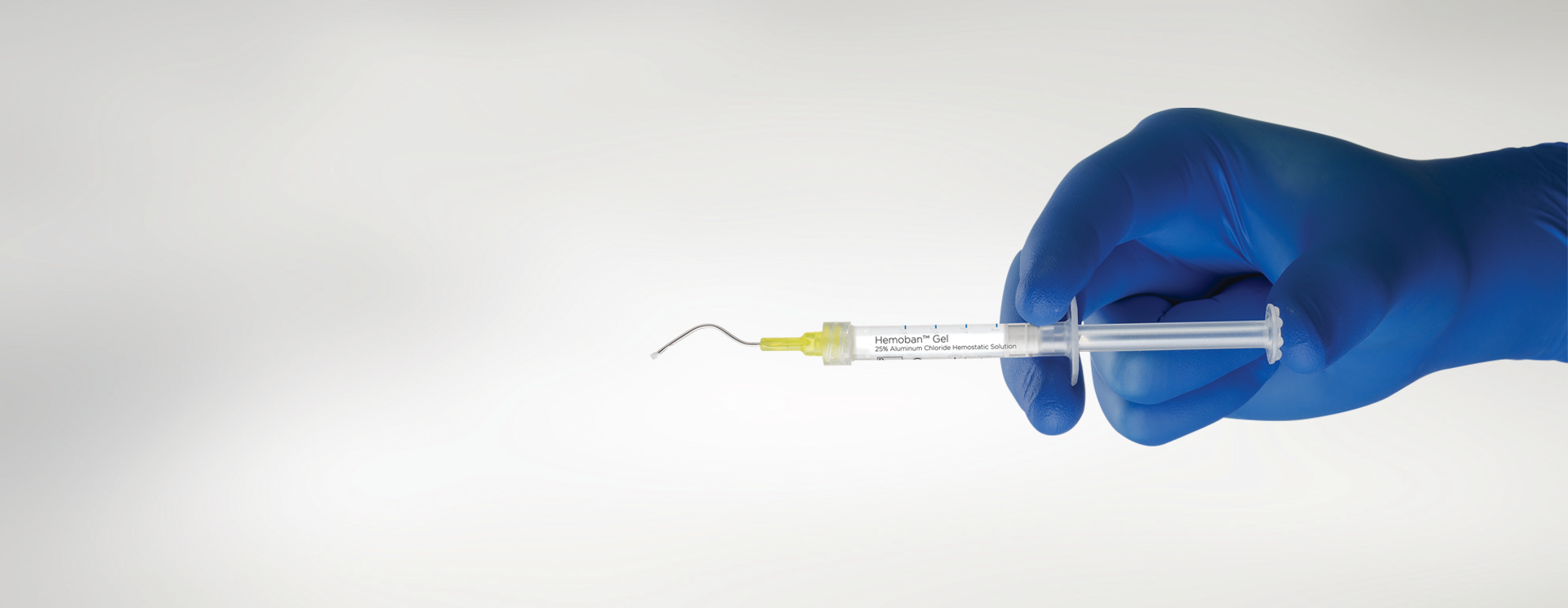Learn more about the Dentsply Sirona Windows 11 Security Package to continue ensuring security and compatibility of your Dentsply Sirona devices.

Shop now
Find the products your practice needs to succeed.
Bring innovation to your practice with Hemoban Gel.
Hemoban Gel
Tissue management is a key challenge during indirect procedures. The right choice of dental hemostatic agents can make all the difference. During a single-unit crown procedure, the fewer variables you have working against you the better. That’s why Dentsply Sirona developed Hemoban Gel 25% Solution. Thanks to a 25% aluminum chloride formula, it stops bleeding on the spot, with no clotting and less risk of secondary bleeding, so you can take seamless impressions conventionally or digitally. Get the viscous yet spreadable solution that stays where you place it, and then rinses away easily leaving no residue—for better impression accuracy.
Benefits
Why choose Hemoban Gel?



Simpler procedure



Better placement



No secondary bleeding



Easy rinsing
Simpler procedure. No secondary bleeding.
Other dental hemostatic agents work through a coagulating, band-aid effect that can cause recurrent bleeding upon cord removal. Hemoban Gel solution is different. Its astringent effect prevents secondary bleeding by constricting blood vessels to minimize the risk of secondary bleeding.
Videos
Introduction of Hemoban Gel
Testimonial Dr. McGraw
FAQs
Hemoban Gel is intended for tissue management prior to impression making and before final restoration cementation. It controls bleeding and gingival oozing in restorative dentistry. There are various clinical situations dentists can use Hemoban Gel to achieve a dry field with good visibility, i.e. after preparations for indirect restorations (both conventional and digital), deep scaling, direct restorations and also before final cementation with re-occurring bleeding after provisional removal.
Even though it is more viscous than hemostatic liquids, Hemoban Gel can soak cords. We are recommending applying Hemoban Gel, than packing the dry cord through the gel. Hemoban Gel will both coat the cord for easier packing and soak it to facilitate hemostasis.
Yes, we recommend a full removal of Hemoban Gel with water/air spray before taking the impression. Re-occurring bleeding should be controlled repeating Hemoban Gel application, until the sulcus stays dry.
Retraction pastes are usually intended for both retracting soft tissue and providing hemostasis through active ingredients like Aluminum Chloride. Hemoban Gel provides reliable hemostasis; in conjunction with retraction cords it does replace retraction pastes. However, if the clinician still wants to use a retraction paste together with Hemoban Gel, that is not a problem.
While retraction pastes seem to be convenient, they are a compromise on both ends: the hemostatic agent release rate tends to be lower due to paste-like viscosity, and they provide lower retraction than cord application (around 25% less)1 . This presents challenges for impression materials: narrower widths increase risk of tears.
1 Mahmoud Kazemi, Maryam Memarian and Venus Loran, 2009. Comparing the Effectiveness of Two Gingival Retraction Procedures on Gingival Recession and Tissue Displacement: Clinical Study. Research Journal of Biological Sciences, 4: 335-339.
